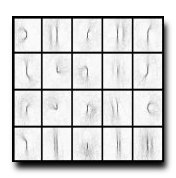
While mid-level perceptual cues have long been of interest in the human vision
community, their role in computer vision has remained limited. In this report,
we evaluate several algorithms which make use of mid-level processing in order
to improve boundary detection. Our first technique builds a probabilistic
model of the relation between prototypical local shapes of edges and the
presence or absence of a boundary. We also present a more explicit local model
of curvilinear continuity using piecewise linear representations of contours
and the Constrained Delaunay Triangulation (CDT). Lastly we consider a global
random field on the whole CDT which captures continuity along with the
frequency of different of junction types. All three models are trained on
human labeled groundtruth. We measure how each model, by incorporating
mid-level structure, improves boundary detection. To our knowledge, this is
the first time that such cues have been shown quantitatively useful for a
large set of natural images. Better boundary detection has immediate
application in the problem of object recognition.
Download: pdf
Text Reference
Xiaofeng Ren, Charless C. Fowlkes, and Jitendra Malik.
Mid-level cues improve boundary detection.
Technical Report UCB//CSD-05-1382, UC Berkeley, 2005.
BibTeX Reference
@TechReport{RenFM_TR_2005,
author = "Ren, Xiaofeng and Fowlkes, Charless C. and Malik, Jitendra",
title = "Mid-level cues improve boundary detection",
institution = "UC Berkeley",
number = "UCB//CSD-05-1382",
year = "2005",
tag = "grouping"
}
